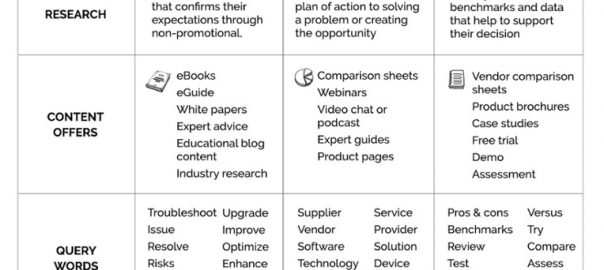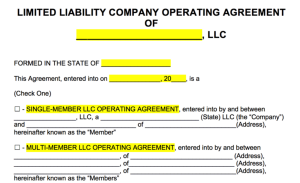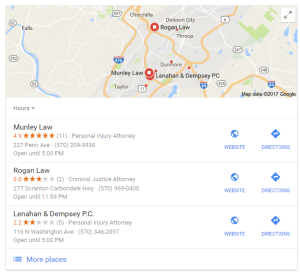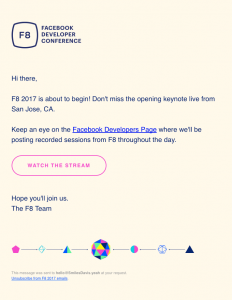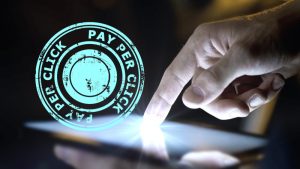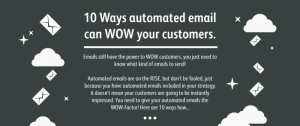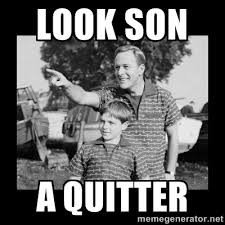— July 26, 2017
Hooray! You’ve recently launched several marketing campaigns that have done an excellent job generating leads. But, you can’t totally celebrate because these efforts haven’t turned into real business opportunities yet. Leads are coming through the door and you’re nurturing them with content, but they aren’t moving. You have a bottleneck. Something is stopping these leads from moving along in their journey to purchasing from you, but what is it? Before we explore the root of the problem, let’s do a quick review of the buyer’s journey.
The buyer’s journey is the hypothetical process a potential customer goes through to get to a point of sale. In the content marketing world, we use this hypothetical journey to build content and points of interaction that facilitate each stage of the journey, thus bringing the prospect closer and closer to buying. Below is a graph of the typical buyer’s journey:

If you’ve done all the work of mapping content to the buyer’s journey, created campaigns to fill it, and aren’t seeing leads turn into real opportunities, you likely have a bottleneck in this journey. The first step in identifying the bottleneck is to ask yourself this question:
Where in the journey are leads getting stuck or disengaging?
By asking this question, you can get a sense of where in the buyer’s journey you have a bottleneck. Understanding where this is happening will often reveal the problem. For example, if leads are entering the funnel early in the buyer’s journey but don’t take any further action after their first conversion, you may not have the right follow-up in place. Even worse, you may have technical issues like a broken download link that cause them to lose trust in you. On the other hand, you may discover that leads come to a halt after several weeks of email nurturing that seems to have great performance until the last couple of emails that pitch a demo. In this case, you might not have copy that effectively communicates your value proposition, among other issues. The point of these examples is to illustrate that you have to understand where and why bottlenecks are happening to resolve them. Beyond that, here are some of the most common bottlenecks in moving leads through the buyer’s journey and what you can do about them:
You Don’t Understand Your Buyer’s Journey
If you skip critical steps in the process of developing a buyer’s journey such as persona interviews, it will be nearly impossible to remove the bottleneck. You may be using the wrong content to attract buyers, but you may also be using the wrong content to push leads to the next stage in the buyer’s journey. If you do your homework, you will usually ace the test. Just keep that in mind.
The Buyer’s Not Ready
One of the most common bottlenecks or reasons leads get stuck in their journey is simply that they aren’t ready to move further along. You may have done an excellent job in content creation to get them to get them download it, but a download doesn’t mean the lead is ready to sign on the dotted line. The buyer’s journey and the content you develop for it will help to move that lead along, but there are times when that lead might not be ready to buy today, tomorrow, or possibly ever. There will always be leads who enter the funnel who aren’t ready to buy, don’t have the decision-making power to buy, or might have more pressing issues. The possibilities for leads not being ready are numerous, but that doesn’t mean it’s hopeless. You can do something about it.
First of all, you can simply ask a lead why they haven’t bought from you yet. Use a survey, a form, or just a quick email to determine why the lead isn’t ready. Doing this not only helps you to overcome objections, but it also reveals tools or content you can develop to remove bottlenecks.
Second, when leads aren’t ready to purchase because they don’t have a pressing need or project or the budget to purchase at the time they first interact with you, it’s okay. You should still stay on their radar until they are ready—focus less on pushing them to the decision stage of the buyer’s journey and more on engaging them until they want to or can buy from you. With the not-ready leads, you should be serving up insightful and interesting content that has nothing to do with your product. Follow the example of nurturing campaigns from companies like CoSchedule or Wordstream, which rarely send promotional email and focus mostly on informational reads, not like companies that send so much promotional email that the “engaging” content they do send is lost. If the lead isn’t ready to buy, keep their attention by providing value with the content you provide them so that they turn to you first when they are ready.
A Long Sales Cycle
Another common bottleneck in the buyer’s journey is a lengthy sales cycle. In most B2B sales, a long sales cycle can’t be avoided; however, a long sales cycle can be a problematic bottleneck if your content and nurturing campaigns have failed to account for it. As an example, let’s say your company has an average sales cycle of six months, but your email nurturing campaigns only last a month. It’s no doubt that leads will be stuck wherever you left them hanging. Your buyer’s journey, content, and nurturing campaigns to support it all should account for your sales cycle’s length. Even companies with extremely long sales cycles can successfully plan their buyer’s journey and nurturing to avoid bottlenecks. For example, the company Starshot found that 25 percent of their closed deals in a three-year period came from leads that had been nurtured for an average of 36 months, with most of those deals being among their biggest sources of revenue. When it comes to long sales cycles and nurturing those leads, you should take the advice of Dory and “just keep swimming.” To determine the best length of nurturing for your buying cycle, it takes ongoing testing, but as a good rule of thumb, nurturing campaigns should be at least as long as your average sales cycle. If you are new to digital or inbound marketing, your nurturing campaigns should be longer than your average sales cycle because an inbound sales cycle is likely longer because the leads are entering at the earlier stages of the buyer’s journey.
The Medium
Along the buyer’s journey, your leads will need various kinds of content to help them further understand their problem (or opportunity), evaluate options, and make a final decision. This means you have to create content in the format best suited for moving a lead through the buyer’s journey. If you create e-book after e-book but really your leads need something simple and easy to use like a calculator to compare costs, you are using the wrong medium and causing a bottleneck. You can avoid this problem by completely understanding your buyer personas and the problems, solutions, and tools they need to make a final decision.
Other than the format of your content that fills your buyer’s journey, you also need to use more than one medium to distribute that content and reach your buyers throughout their journey. It’s not enough to send them a sequence of emails and hope they respond. You also have to engage with them through other means such as social media, digital remarketing, or display campaigns, or at a conference.
Not only is it important to use multiple forms of distribution and content formats because your leads may have tuned you out on one channel, but it is also important because psychologically they will become more engaged when interacting with your company through multiple mediums. For example, video content engages the visual and auditory senses, thus enhancing the chance that they remember you.
Your Buyer Isn’t in the Journey
As mentioned earlier, there are times when the lead entering your system doesn’t have purchasing power. They seem to be entering the journey, but they aren’t raising their hand because it isn’t up to them to make a purchase decision. Does this mean you should abandon them? Absolutely not—because these people may one day be your advocates when Mr. Decision Maker calls upon his team for suggestions. Or, he or she may become the decision maker at that company someday. Nurture these leads but understand that there will inevitably be a bottleneck there.
Your Product or Service Is the Bottleneck
Even some of the world’s greatest aspirations end up failing because they can’t be validated by the buyer. Google Glass seemed like a great concept, but even this product ended up flopping. The reality is that 90 percent of startups fail and even well established companies can end up failing after decades of success. Although I’ve painted a pretty daunting picture, my point is that your product or service may not meet the needs of your leads. It’s also possible that it does, but you haven’t effectively gotten that point across to them. You might be neglecting to share important information like social proof that your product really does solve their needs. You might also be sending the lead conflicting messages about your product. Even worse, however, is if your product actually is terrible and people talk about it. Although you can remove a bottleneck because of poor reputation, it takes a ton of effort and cleanup to convince leads to move through the buyer’s journey. This bottleneck is easy to spot, however, because the company will usually be struggling to close revenue with other sales channels besides inbound leads
Identifying bottlenecks all starts with that simple question, “Where in the journey are leads getting stuck or disengaging?” With this information, you can remove the obstacles and get leads moving to the next stage of the buyer’s journey.
Business & Finance Articles on Business 2 Community
(115)
